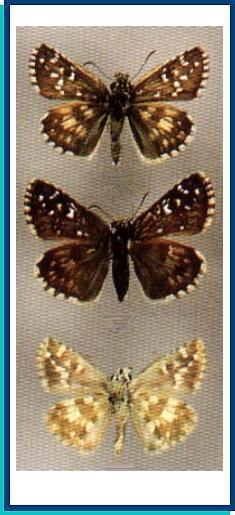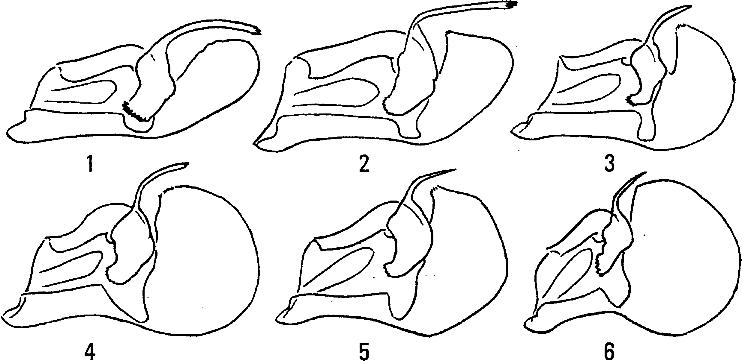LEPIDOPTERA
H E S P E R I I D A E Latreille, 1809
PYRGUS Hubner, [1819]
Pyrgus armoricanus (Oberthur, 1910)
Pyrgus armoricanus (Oberthur, 1910)

• TYPE LOCALITY. "Rennes" [W. France].
• RANGE. From NW. Africa (Morocco, Algeria) across S. Europe and Asia Minor to Iran and Lebanon.
• DISTRIBUTION AND VARIATION. The S. European part, the whole Caucasian region, Kopet-Dagh. Varies, mostly individually, in size of the spots on UPS and in coloration of UNH. Represented by the ssp. persicus Reverdin, 1913; the nominate subspecies occurs in W. Europe.
• HABITATS AND BIOLOGY. Dry open grassy habitats (steppe), dry slopes up to 2,000 m a.s.l. Flight periods: May-June and July-September in two generations; in the south, the number of generations can be greater and the flight period can last from February to October (de Jong, 1972). Host plants in Europe (Henriksen, Kreutzer, 1982): Rosaceae [Fragaria vesca, Potentilla gelida, P. pedata, P. reptans, etc.). Larvae hibernating; pupation in the plant's basal leaves tied together.
• SIMILAR SPECIES. P. alveus: larger, UPS ground colour darker, white spots usually smaller, UNH ground colour greenish, disced spots larger, merging in a band. P. serratulae: UNH spots larger and rounded. P. cinarae: larger, UPS spots wide and almost touching each other, UNH ground colour light, yellowish.
Photo and text: Guide to the BUTTERFLIES OF RUSSIA and adjacent territories Volume 1. PENSOFT, Sofia - Moscow. 1997

1 - P. serratulae major (Nakhichevan);
2 - P. cinarae (Armenia);
3 - P. armoricanus persicus (Nakhichevan);
4 - P. alveus (Teberda, N. Caucasus);
5 - P. speyeri (S. Ussuri region);
6 - P.jupei (Nakhichevan)